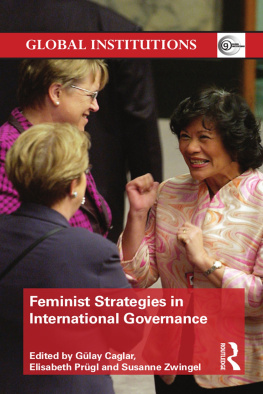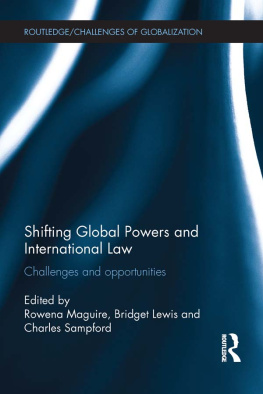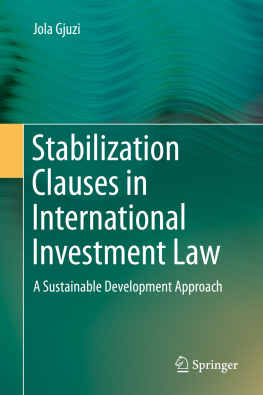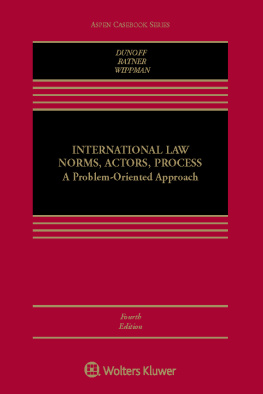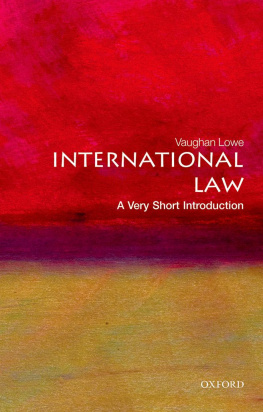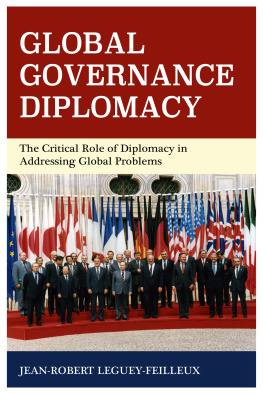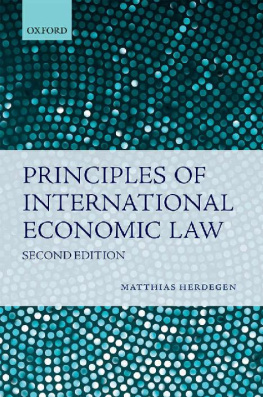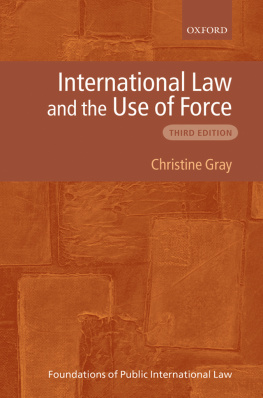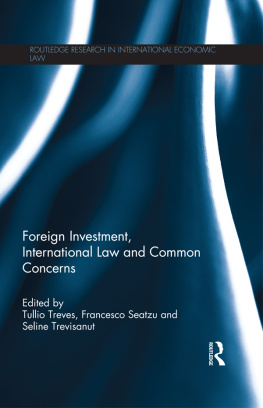A Short Introduction to International Law
In our globalised world the sources and actors of international law are many and its growth prolific and disorderly. International law governs the actions of states on matters as long-standing as diplomatic immunity or as recent as the War on Terror, and it now impacts upon the lives of ordinary citizens in areas as diverse as banking and investment, public health and the protection of the environment. In this accessible introduction Emmanuelle Tourme Jouannet explains the latest developments in international law in the light of its history and culture, presenting it as an instrument both for dominance and for change that adjusts and balances the three pillars of the United Nations Charter: the prohibition of the use of force; economic, social and sustainable development; and human rights.
EMMANUELLE TOURME JOUANNET is Professor of International Law at the Sciences Po Paris School of Law. Among the most prominent French international law scholars of her generation, she is the author of many publications, including two books in English: The Liberal-Welfarist Law of Nations: A History of International Law (Cambridge, 2012) and What is a Fair International Society? International Law between Development and Recognition (2013). She is also one of the editors-in-chief of the Journal of the History of International Law .
A Short Introduction to International Law
Emmanuelle Tourme Jouannet
Translated from the French Le Droit International (Presses Universitaires de France, 2013)
University Printing House, Cambridge CB2 8BS, United Kingdom
Cambridge University Press is part of the University of Cambridge.
It furthers the Universitys mission by disseminating knowledge in the pursuit of education, learning and research at the highest international levels of excellence.
www.cambridge.org
Information on this title: www.cambridge.org/9781107451360
2013 Presses Universitaires de France, Le droit international
This publication is in copyright. Subject to statutory exception and to the provisions of relevant collective licensing agreements, no reproduction of any part may take place without the written permission of Cambridge University Press.
First published in French by Presses Universitaires de France 2013
First published by Cambridge University Press 2014
Printed in the United Kingdom by Clays, St Ives plc
A catalogue record for this publication is available from the British Library
Library of Congress Cataloging in Publication data
Jouannet, Emmanuelle
[Droit international. French]
A short introduction to international law / Emmanuelle Tourme Jouannet; translated from the French Le Droit International (Presses Universitaires de France, 2013) by Christopher Sutcliff.
pages cm
Includes index.
ISBN 978-1-107-08640-1 (hardback) ISBN 978-1-107-45136-0 (paperback)
1. International law. I. Title.
KZ3410.J6814 2014
341 dc23 2014033375
ISBN 978-1-107-08640-1 Hardback
ISBN 978-1-107-45136-0 Paperback
Cambridge University Press has no responsibility for the persistence or accuracy of URLs for external or third-party internet websites referred to in this publication, and does not guarantee that any content on such websites is, or will remain, accurate or appropriate.
To my children
Contents
Introduction
International law is an international policy instrument. It is a set of rules, discourses and techniques that its subjects and actors use to regulate their relations and accomplish certain social ends. International law has its own culture and history. It has evolved over several centuries to reach its current form, and is: a fundamental process for regulating and channelling international violence; an essential common language; an instrumental technique in the service of states and of all the actors of international society. It is a promise of peace. In all of this, its force of attraction is very real indeed. But ever since it emerged in the modern era, international law has also been a part of a profoundly unequal international society in which it nurtures as much violence as it appeases. Far from being a straightforward neutral legal technique, it is, and always has been, the projection upon the international stage of the values and interests of international societys main players, at the same time being used by groups resisting that dominant order. In this respect, it is intrinsically ambivalent. It is simultaneously an instrument of domination and an instrument of emancipation for the subjects and actors who use it. It is as much the sword of the mighty as it is the shield of the meek.
International law has changed considerably since 1945, and its many-faceted development contrasts starkly with the uniformity of classical law. We are witnessing a contemporary multiplication of the sources, norms, operators and users of international law, while the role of sovereign states, until now the foundation of this law, is becoming decidedly less absolute. It is now the law of an international society that emerged from the Second World War and has become a post-colonial and post-Cold War society. These three episodes account for some of the most essential shifts it has undergone. In particular, the classical representation of international law laying down the rules to govern a mosaic of juxtaposed sovereign states is no longer tenable and no longer fits contemporary international law. Sovereignty has weakened, and international institutions, individuals and private economic actors are ever more emancipated in our globalised world. International law is changing and its traditional dividing lines are being redrawn to accommodate new structures, areas of regulation and intervention, subjects, content and scope.
International law is therefore a body of law undergoing wholesale change as the limits of the classical dogmatic presentation of it become apparent everywhere. This change, though, raises many issues of its own that must also be weighed up. International law is currently expanding and evolving in response to unprecedented demand. But it is evolving beyond recognition and control. This paradox is confirmed if we try to discern its most distinctive features more clearly, and it has led me to multiply the angles of approach to this system of law rather than to close in on it from just one direction, a move that might restrict the perspective and skew our understanding. I propose to contemplate international law from three separate vantage points as a way of identifying and discussing its most essential dimensions: international law as history and culture (). These three dimensions will enable me to bring out some of the most important issues which international law has raised in different places and at different times, and to critically examine those features, both old and new, that confer on it its legal character.
International law as history and culture
International law is a human practice punctuated by a series of changes that have affected its forms and meanings in a process that has been neither linear nor one-directional. It has continually stirred up controversies about its existence and its nature, some of which have become long-standing, others outmoded. International law is comparatively recent law, in that it did not really emerge with the Treaties of Westphalia of 1648 (even if its historiography often cites that date) but later, in the eighteenth century when modern Europe was in its heyday. In this, it is a culture, a European (and more broadly Western) culture, in which law is given an eminent position in the realm of political thought. Ever since the eighteenth century, international law has sought to rule a diverse, plural international society in which resources are unequally shared among states, and populations and individuals are unequally endowed in terms of their wealth, freedom and well-being.


